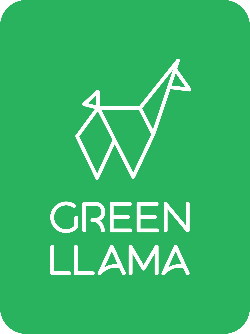The Good, The Bad & The Greenwashed: A Guide to Non-Toxic Cleaning Ingredients
by Kay Baker on Oct 14, 2025
Healthy Home
The Good, The Bad & The Greenwashed: A Guide to Non-Toxic Cleaning Ingredients
Transparency note: Educational guide under Green Llama’s EEAT & Trust Framework. Not medical or legal advice. Always follow product labels and spot-test first; store products away from children and pets.
You’ve decided to choose safer, non-toxic cleaning products. You pick up a bottle with a leaf on the label and flip it over—then stare at words like decyl glucoside, sodium lauryl sulfate, and benzisothiazolinone. What’s safe? What’s effective? What’s greenwashed?
You deserve clarity. This guide is your cheat sheet for decoding cleaning labels—what to welcome, what to watch, and what to avoid—so you can make confident choices every time.
For the full system approach to a healthier home, see our Ultimate Guide to Eco-Friendly & Non-Toxic Cleaning.
The Green Flag Ingredients — The “Good List”
- Plant-Based Surfactants: Do the heavy lifting by lifting grease and grime.
- Citric Acid: Natural chelator and water softener; dissolves mineral deposits and boosts systems.
- Sodium Bicarbonate & Sodium Carbonate: Baking soda and washing soda—gentle abrasive, deodorizer, and water softener duo.
- Sodium Percarbonate: A bleach alternative that releases hydrogen peroxide in water and ultimately breaks down into water, oxygen, and sodium carbonate.
- Essential Oils (pure & disclosed): For light scent only; use thoughtfully around pets.
The Yellow Flag Ingredients — The “Watch List”
- “Fragrance/Parfum” (undisclosed): Can mask many compounds, including potential allergens. Prefer full disclosure or certified fragrance-free options.
- Borax (Sodium Borate): Traditional booster with safety debates (skin irritation; high-dose concerns). Often replaceable with gentler alternatives.
- PVA/PVOH (Polyvinyl Alcohol): Dissolvable petroleum-based films in pods/sheets.
The Red Flag Ingredients — The “Avoid List”
- Phthalates: Often hidden in “fragrance”; associated with endocrine disruption.
- Ammonia: Potent lung irritant; avoid especially in enclosed, unventilated spaces.
- Quaternary Ammonium Compounds (“quats”): e.g., benzalkonium chloride; linked to asthma triggers and skin irritation.
- Triclosan: Aggressive antibacterial; concerns include endocrine disruption and antimicrobial resistance; banned from OTC hand soaps in the U.S.
How to Read a Cleaning Label in 4 Steps
- Start at the back: Ignore front-of-pack buzzwords; the truth is in the ingredient list.
- Look for full disclosure: Clear, complete ingredient lists beat vague terms like “surfactants.”
- Identify the scent source: Specific essential oils listed beats a blanket “fragrance.”
- Find credible seals: Recognized third-party programs (e.g., EWG Verified, EPA Safer Choice, cruelty-free) indicate additional review.
Power of Positive Cleaning™: Choose concentrated, refillable, and clearly labeled products. When in doubt, pick powder or tablet formats in paper or compostable packaging.
Frequently Asked Questions
Should I avoid all products with “sulfate” in the name?
Not necessarily. “Sulfate” covers many compounds with different properties. Evaluate the whole formula, intended use, and how your skin or surfaces respond.
What if a brand lists only “fragrance”?
Ask for disclosure or choose a fragrance-free version. Prefer brands that publish full fragrance palettes or use simple essential oils with clear labeling.
Trust & Reader Support
- 24-hour correction pledge: If you spot an error, we’ll review and update within 24 hours.
- Contact CX: hello@greenllamaclean.com
- Returns: 90-day money-back guarantee on starter kits. See policy.





